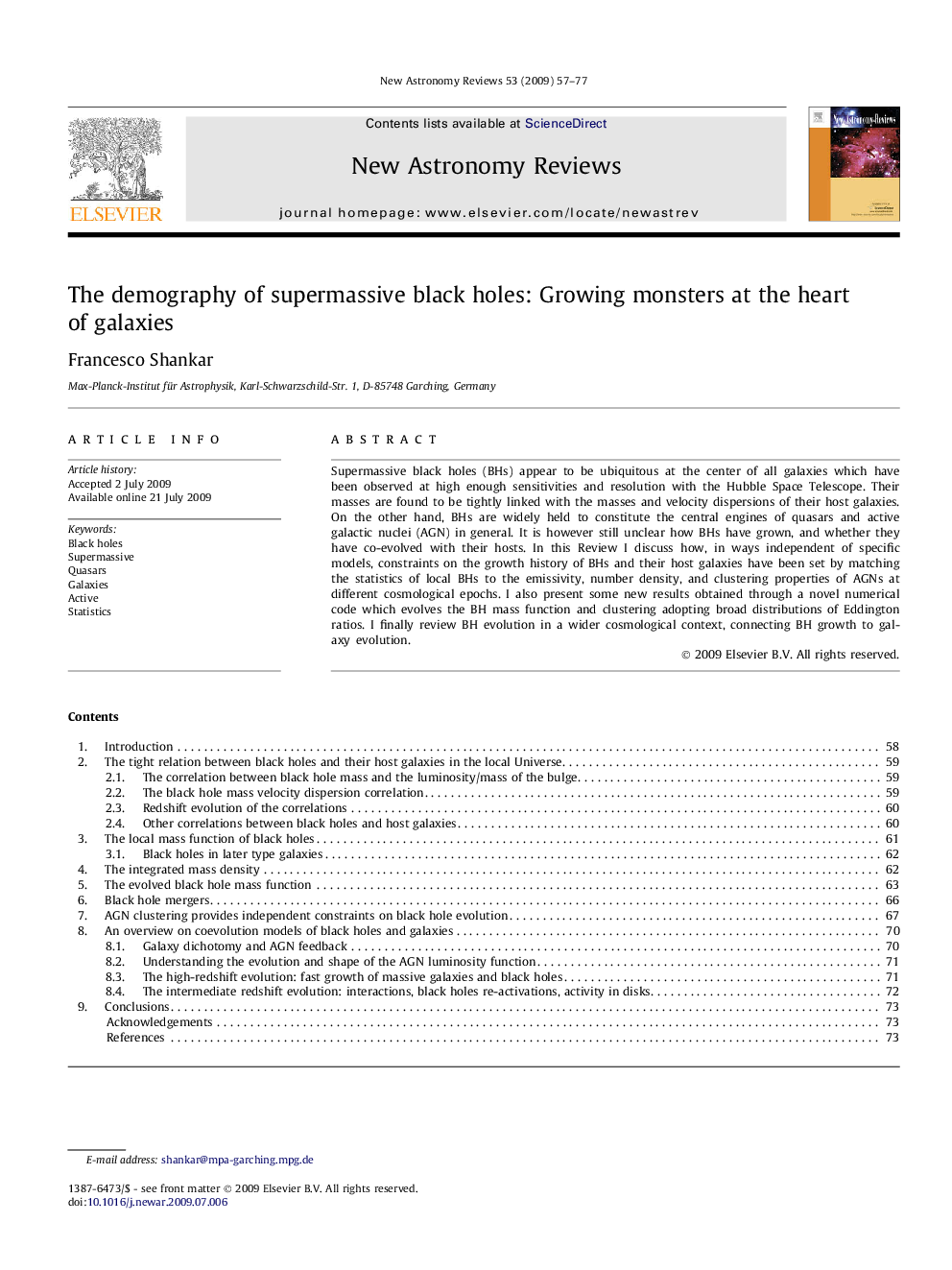| Article ID | Journal | Published Year | Pages | File Type |
|---|---|---|---|---|
| 1780000 | New Astronomy Reviews | 2009 | 21 Pages |
Supermassive black holes (BHs) appear to be ubiquitous at the center of all galaxies which have been observed at high enough sensitivities and resolution with the Hubble Space Telescope. Their masses are found to be tightly linked with the masses and velocity dispersions of their host galaxies. On the other hand, BHs are widely held to constitute the central engines of quasars and active galactic nuclei (AGN) in general. It is however still unclear how BHs have grown, and whether they have co-evolved with their hosts. In this Review I discuss how, in ways independent of specific models, constraints on the growth history of BHs and their host galaxies have been set by matching the statistics of local BHs to the emissivity, number density, and clustering properties of AGNs at different cosmological epochs. I also present some new results obtained through a novel numerical code which evolves the BH mass function and clustering adopting broad distributions of Eddington ratios. I finally review BH evolution in a wider cosmological context, connecting BH growth to galaxy evolution.
